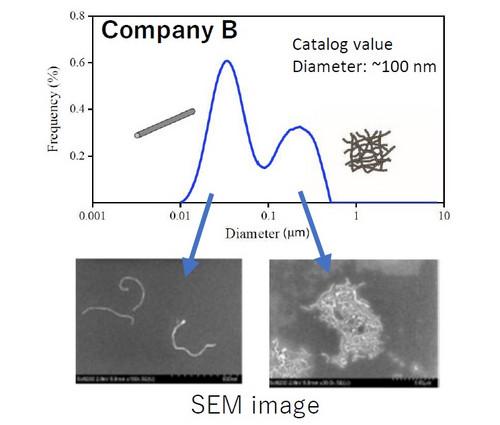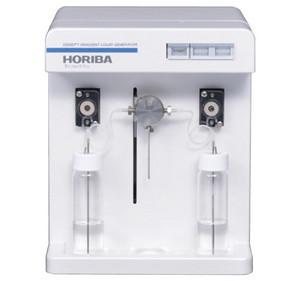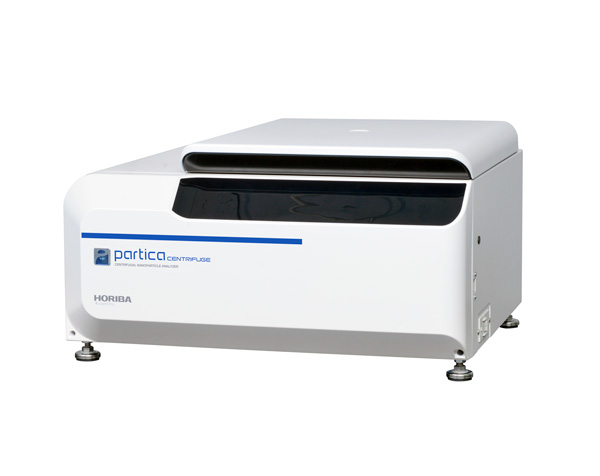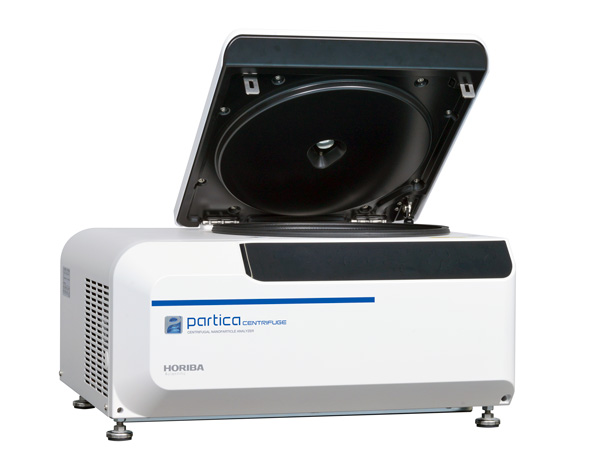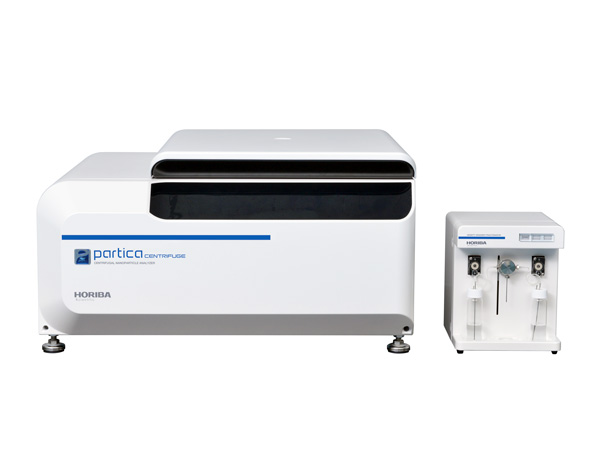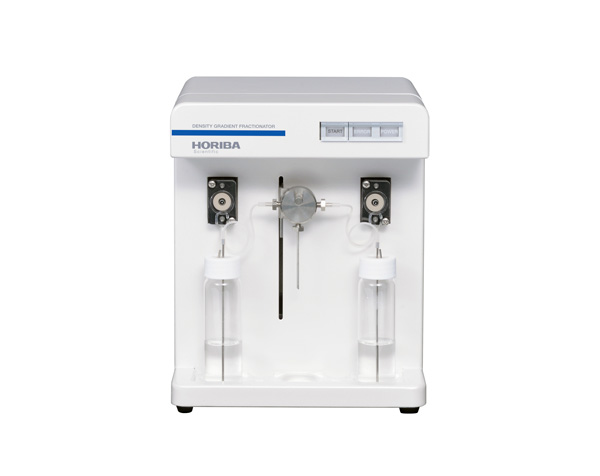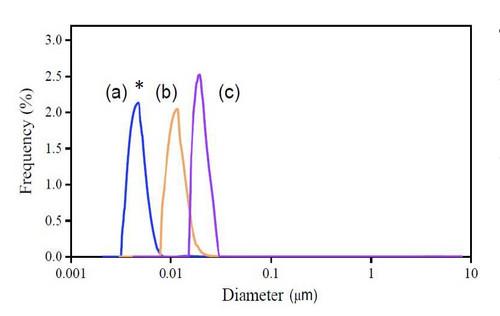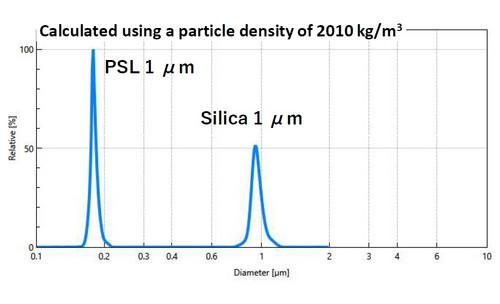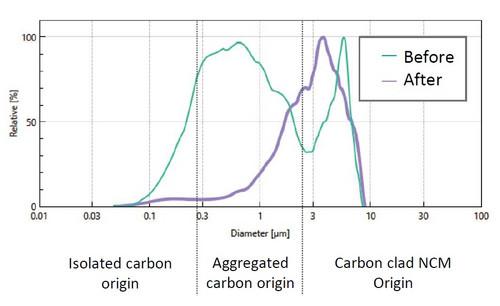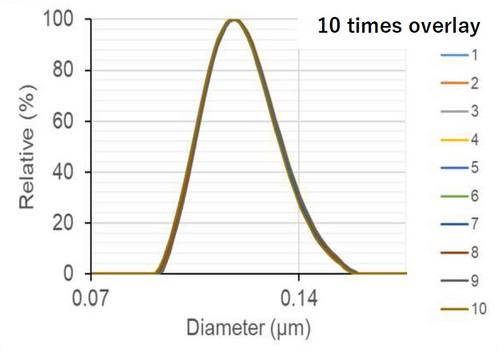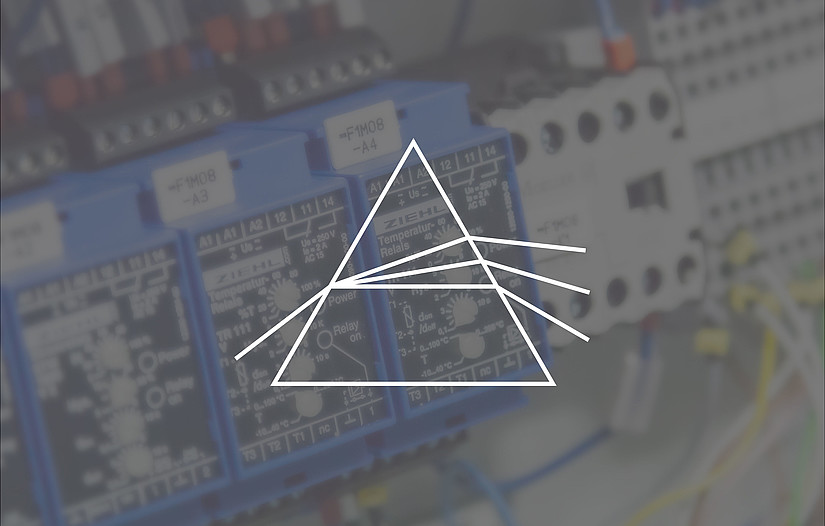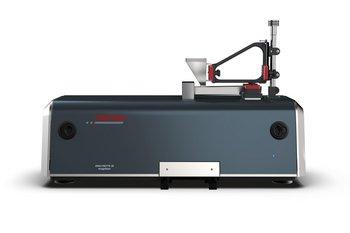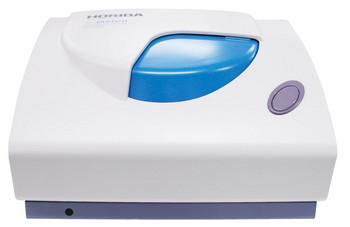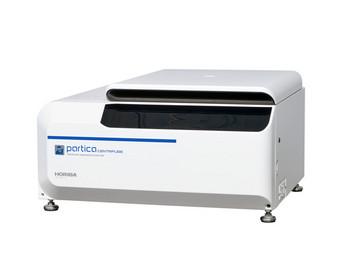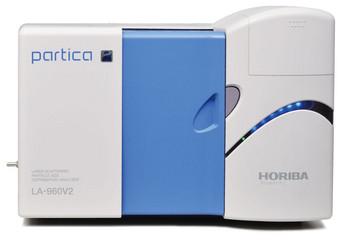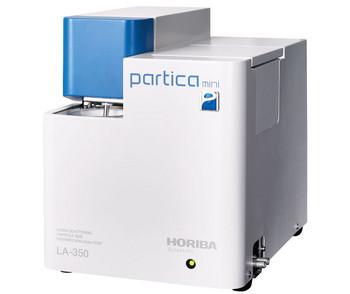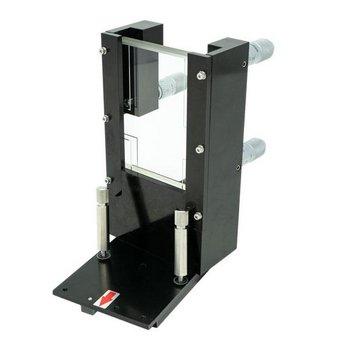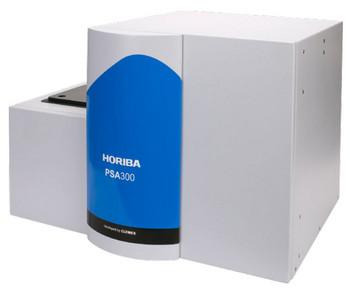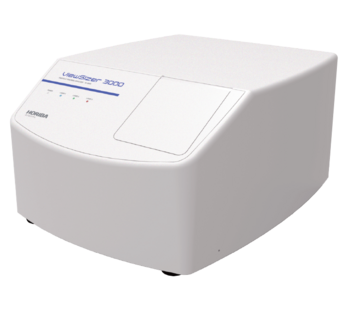Mesure précise de la granulométrie pour les échantillons non dilués et dilués
Le principal atout de la centrifugation est qu'elle permet de mesurer la granulométrie après avoir classé les particules par taille. Un large éventail de résultats de haute précision peut ainsi être obtenu à partir d'une seule analyse. L'analyseur Partica CENTRIFUGE vous permet d'utiliser deux techniques de mesure : « Line-start mode » et « Homogeneous mode ».
Détectez les particules étrangères ou les agglomérations en faible quantité
Grâce à sa haute résolution, Partica CENTRIFUGE peut détecter les petites quantités de particules étrangères. Cet instrument génère des résultats de mesure fiables sur toute la plage de la distribution granulométrique, y compris pour les petites populations et dans la partie basse de la distribution.
Mesure stable même pour les mesures de longue durée
La fonction de refroidissement de la chambre à échantillon et du rotor empêche l'augmentation de la température de la fraction d'échantillon pendant la rotation, ce qui améliore la fiabilité des résultats de mesure en maintenant la viscosité constante. L'analyseur Partica CENTRIFUGE est conçu pour assurer un fonctionnement plus silencieux, plus simple et plus sûr.
Robuste et facile à utiliser
- Fonctionnement simple et sûr : il suffit de placer une cellule remplie d'échantillon sur un rotor
- La cellule de type cuvette est facile à nettoyer et à remplacer, ce qui réduit le risque de contamination
- Conforme aux normes de sécurité internationales (CEI 6101-1/2-020)
Exemples de mesures
Mesure de distribution granulométrique haute résolution
La mesure d'un échantillon mixte contenant quatre types de particules de silice standard en concentrations égales a permis d'obtenir quatre types de distributions présentant quasiment la même surface. La mesure « Line-start mode » permet d'obtenir une distribution granulométrique précise, car les particules sont classées par la force centrifuge.
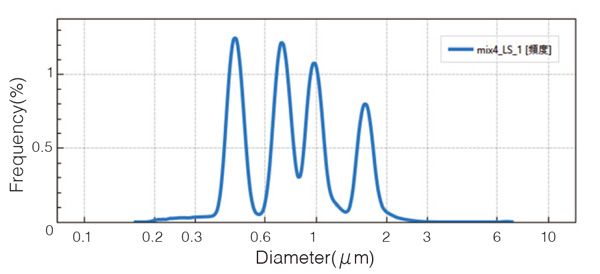
Échantillon : particules standard (mélange d'une goutte de chacune des particules de 0,48 μm, 0,73 μm, 0,99 μm et 1,57 μm)
Quantité d'échantillon : 10 µL
Solvant : solution aqueuse de saccharose
Condition de mesure : « Line-start mode »
Mesure de la distribution granulométrique d'une petite quantité d'échantillon à forte concentration
Exemple de pigment noir utilisé pour les imprimantes à jet d'encre à partir d'une solution non diluée. La distribution granulométrique d'un échantillon à forte concentration, qui est difficile à mesurer, est présentée avec une grande précision à partir d'un petit échantillon de 2 μL
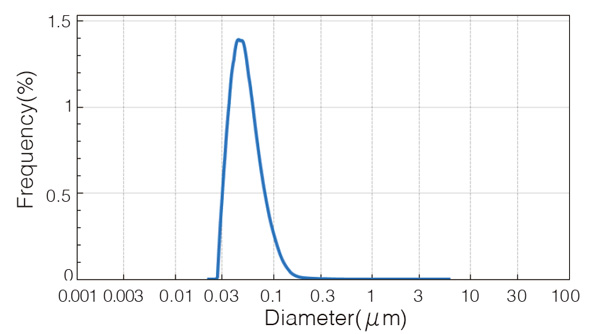
Échantillon : pigment noir pour imprimantes à jet d'encre (solution non diluée)
Quantité d'échantillon : 2 µL
Solvant : solution aqueuse de saccharose
Condition de mesure : « Line-start mode »
Vidéo de présentation du produit
Voir la vidéo
Vidéo de présentation détaillée du produit
Voir la vidéo
